
TV Television
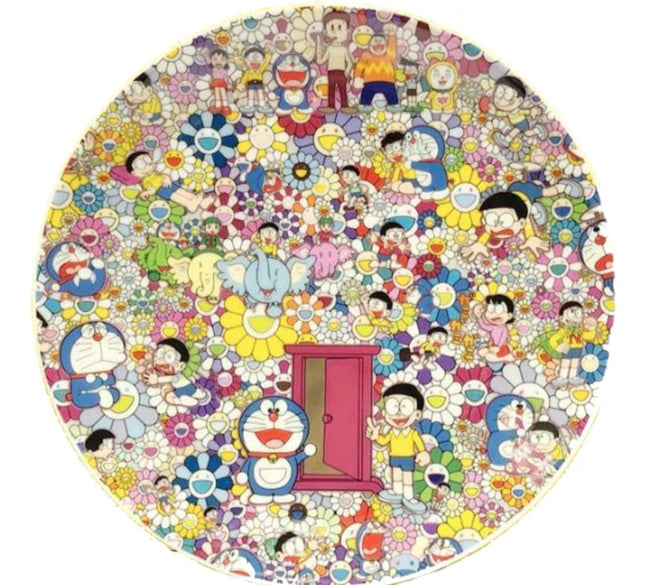
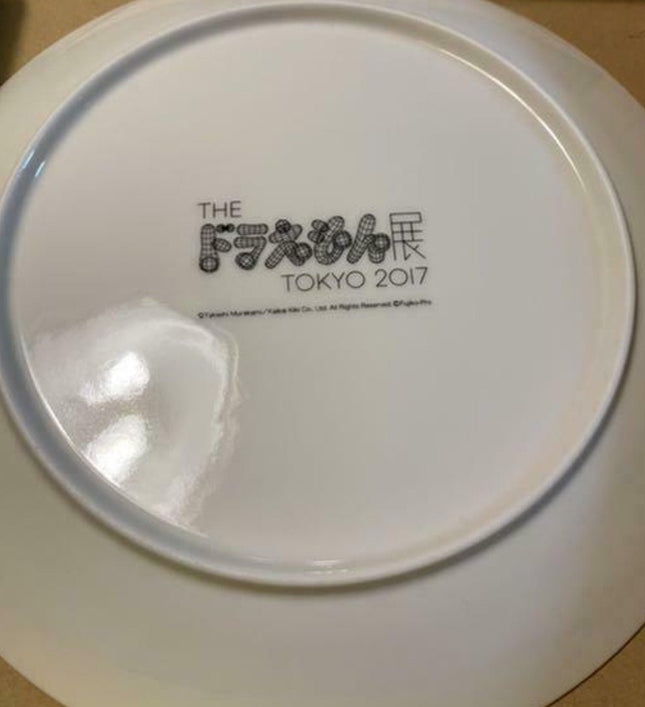
Takashi Murakami TM/KK Doraemon Exhibition Tokyo Archival Pigment Plate by Takashi Murakami TM/KK
Doraemon Exhibition Tokyo Plate Limited Edition Archival Pigment Print Art on Ceramic Plate Artwork by Famous Artist Takashi Murakami TM/KK. 2017 Limited Edition Size 9" Collectible Art Plate Takashi Murakami's Intersection of Traditional and Pop Culture Takashi Murakami, a renowned artist whose work has consistently blurred the lines between fine art and pop culture, created a piece for the Doraemon Exhibition in Tokyo that captures the essence of this fusion. The exhibition piece, a limited edition 9-inch ceramic plate, features Murakami's signature style, often incorporating brightly colored anime and manga characters into traditional artistic formats. Artistic Elements and Cultural Influence Murakami's work on the Doraemon Exhibition plate is an archival pigment print that brings street pop art's vibrancy to the ceramic medium. This artwork stands out for its amalgamation of characters from the popular Japanese series 'Doraemon' with Murakami's distinctive flower motifs and designs. The characters are set against a backdrop of many flowers, creating a complex, eye-catching pattern that represents Murakami's exploration of contemporary Japanese society and otaku culture within the context of historical artistic practices. Murakami's Unique Style and the Art World Murakami's approach often involves a dialogue between different cultural elements, combining traditional Japanese artistic techniques with the mass appeal of anime and manga. His method is rooted in the "Superflat" concept, which he coined to describe the cultural commentary embedded in his artworks. This style is evident in the Doraemon Exhibition plate, where the flattened pictorial plane and the juxtaposition of characters suggest a deeper narrative on the influence of pop culture in our lives. Pop Art, Street Art, and Their Confluence By incorporating elements of street pop art and graffiti artwork into his ceramic plate design, Murakami contributes to the ongoing conversation about the validity and importance of pop culture in the art world. He elevates the perception of animated characters by placing them within the context of 'high art,' challenging preconceived notions about the value and meaning of pop and street art. Collectibility and Murakami's Global Impact The Doraemon Exhibition plate is a piece of art and a collectible item that has garnered attention from art collectors and enthusiasts worldwide. Murakami's ability to traverse the line between art and commodity has made his works highly sought after, and pieces like the Doraemon plate continue to shape the landscape of contemporary art collecting. Through these collectibles, Murakami has left a significant mark on global art culture, influencing new generations of artists and collectors alike. This Doraemon Exhibition plate by Takashi Murakami is a testament to the transformative power of pop culture within the art world and its ability to create new dialogues and understandings across different mediums and cultural backgrounds.
$500.00
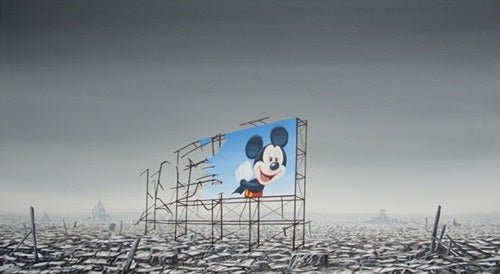
Jeff Gillette Mickey Hiroshima Archival Print by Jeff Gillette
Mickey Hiroshima Limited Edition Archival Pigment Prints on 290gsm Moab Fine Art Rag Paper by Jeff Gillette Graffiti Street Artist Modern Pop Art. 2013 Signed & Numbered Limited Edition of 30 Size 14x9 "I am from the suburbs of Detroit, Michigan. In the late 1980s, I was a Peace Corps volunteer in Nepal for two years. During this two-year stint, I visited every major city in India, finding myself exploring the huge slums found there. On my return home, I moved from the Mid-West to escape the snow to teach High School Art in Orange County, California. Since finishing my MFA at Cal State Fullerton, I have been exhibiting in galleries both at home and abroad. My work is most often landscapes. A major portion of my output is paintings of slums of the developing world, where I often add an element of western cultural privilege (and oblivion) into settings of urban blight. Inspiration for what I call “Slumscapes” comes from the first-hand experience of traveling. Most often I return over and over to my favorite destination: India. In the vast poverty-stricken fringes of its vast megalopolises, I trip out on how the economic disparities are obscenely extreme. I’ve been spending a lot of time in Mumbai slums: photographing, filming, creating Plein Aire paintings, and creating interactive street art. Besides depicting slums, my artwork portrays post-apocalyptic debris fields, landfills, and detritus-cluttered deserts. The Juxtaposition of Disney themes and beloved characters (i.e.: Mickey Mouse) with all these dystopias best conveys my personal views. Pondering contemporary social, political, economical and philosophical conundrums, I can’t help but feel absurdly helpless, pessimistic and humored about the future of Western Civilization…" - Jeff Gillette
$406.00
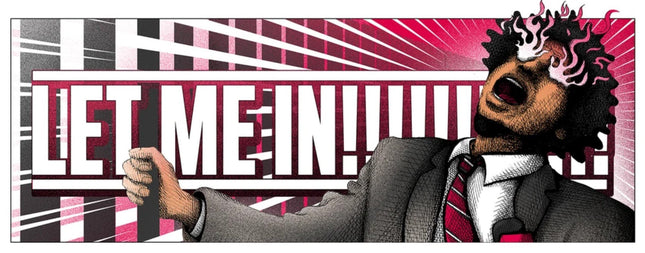
Shane Lewis LET ME IN Silkscreen Print by Shane Lewis
LET ME IN Color Hand-Pulled Limited Edition Silkscreen Print on Fine Art Paper by Shane Lewis Rare Street Art Famous Pop Artwork Artist. 2021 Silkscreen print 24 x 9 inches Limited Edition of 50 Inspired by Eric Andre Unsigned
$58.00
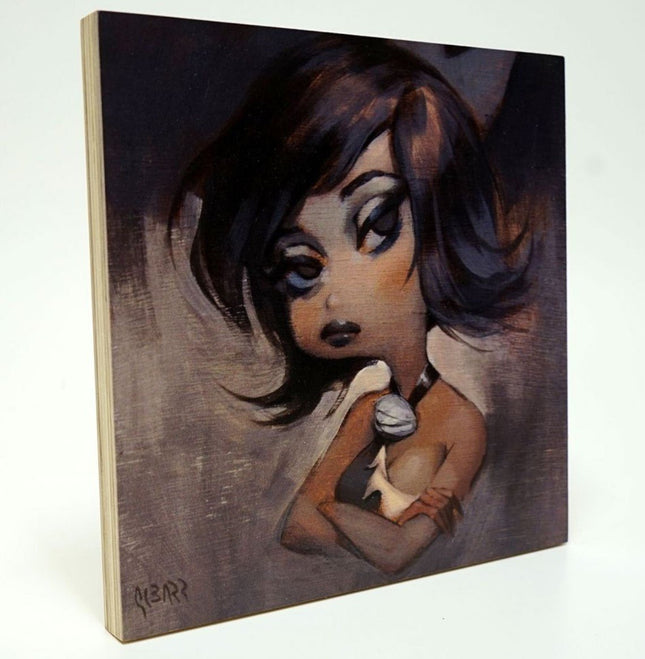
Glenn Barr The Long Night Wood Archival Print by Glenn Barr
The Long Night Print on Wood Panel Framed Ready to Hang by Glenn Barr Modern Pop Artist. 9 x 9 in. (22.86 x 22.86cm) Exclusive fine art wood print on 3/4" sustainable Birch, bright white finish. Limited edition of 50 fine art wood canvas prints hand signed by Glenn Barr. Betty Rubble From the Classic Cartoon TV Show Flintstones
$406.00






